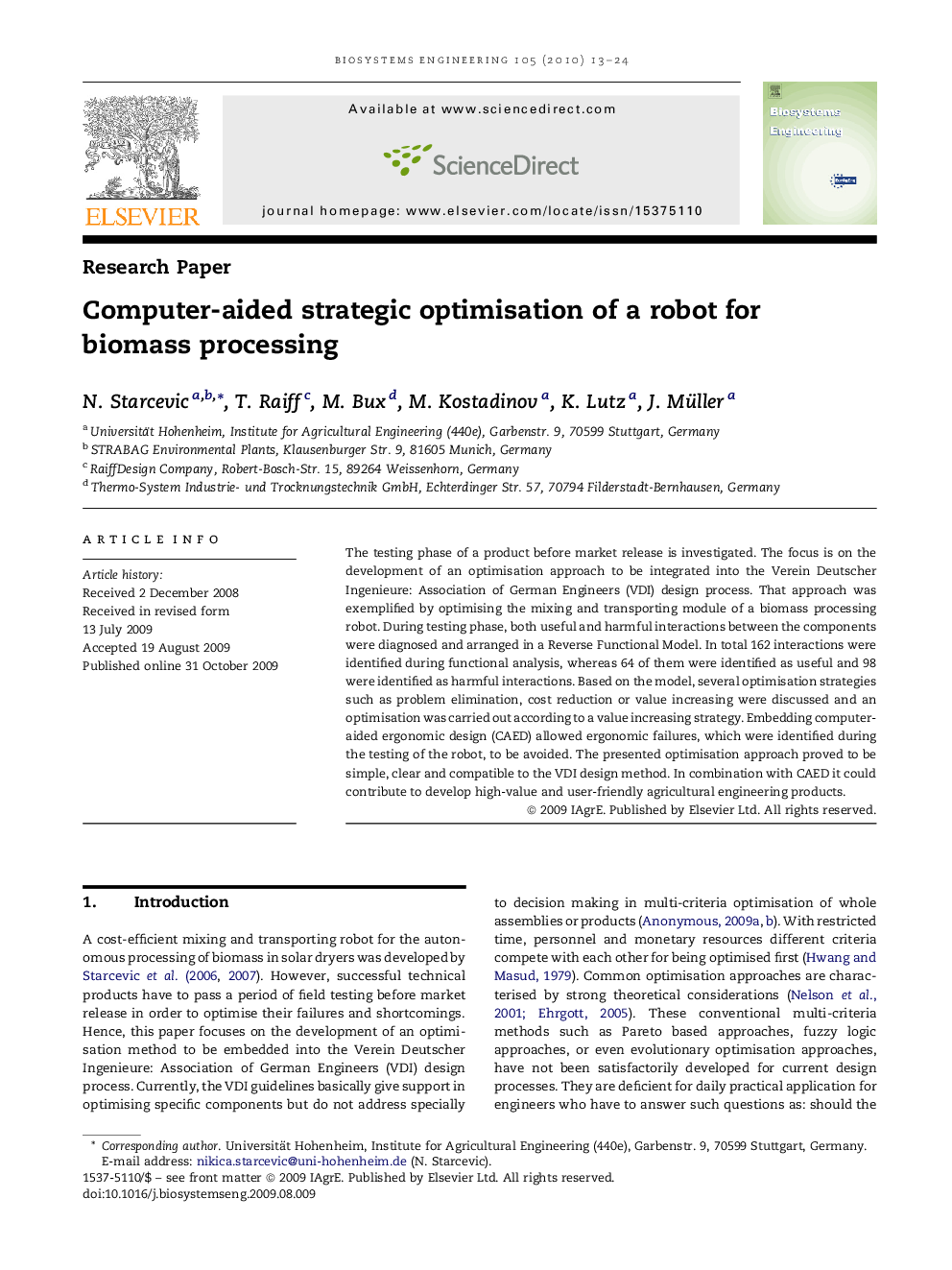| Article ID | Journal | Published Year | Pages | File Type |
|---|---|---|---|---|
| 1712043 | Biosystems Engineering | 2010 | 12 Pages |
The testing phase of a product before market release is investigated. The focus is on the development of an optimisation approach to be integrated into the Verein Deutscher Ingenieure: Association of German Engineers (VDI) design process. That approach was exemplified by optimising the mixing and transporting module of a biomass processing robot. During testing phase, both useful and harmful interactions between the components were diagnosed and arranged in a Reverse Functional Model. In total 162 interactions were identified during functional analysis, whereas 64 of them were identified as useful and 98 were identified as harmful interactions. Based on the model, several optimisation strategies such as problem elimination, cost reduction or value increasing were discussed and an optimisation was carried out according to a value increasing strategy. Embedding computer-aided ergonomic design (CAED) allowed ergonomic failures, which were identified during the testing of the robot, to be avoided. The presented optimisation approach proved to be simple, clear and compatible to the VDI design method. In combination with CAED it could contribute to develop high-value and user-friendly agricultural engineering products.
